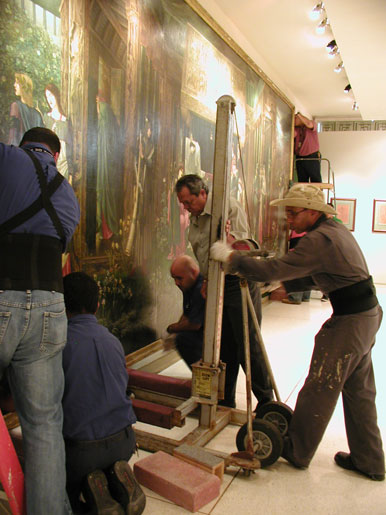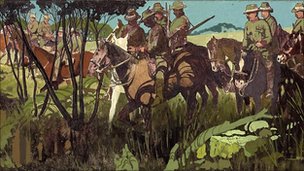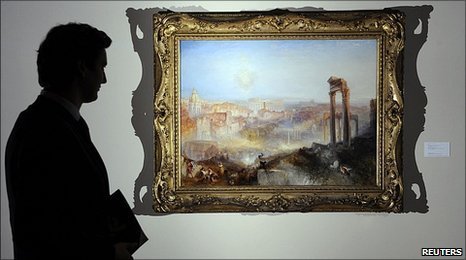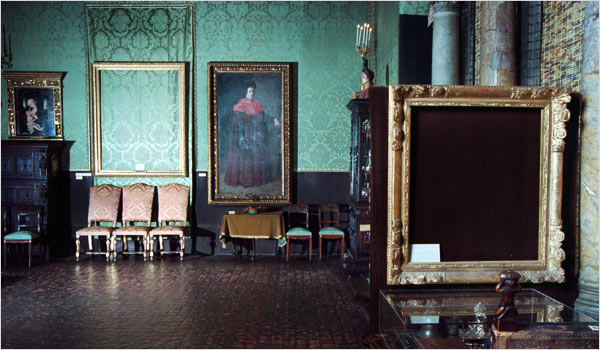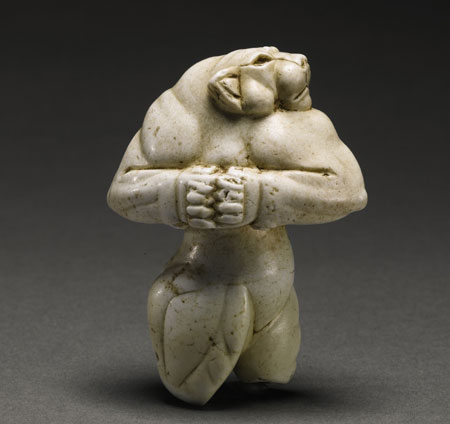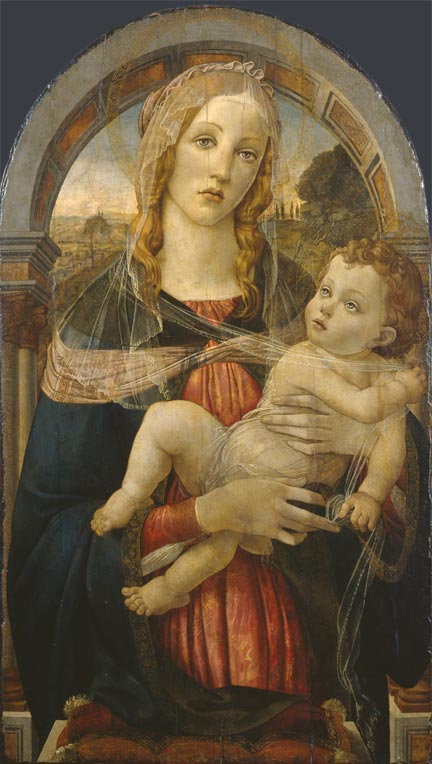On 19 Oct, 2010 With
Edward Burne-Jones Tate puts costly error on display By Nigel Reynolds, Arts Correspondent Four decades ago, the Tate Gallery could have bought Edward Burne-Jones’s huge final painting, The Sleep of Arthur in Avalon, for £1,000. But the Victorian Pre-Raphaelites were despised and the gallery spurned the chance. Now, the 21ft by 10ft painting is worth millions and on Tuesday Tate Britain welcomed it back – but only on loan. Stephen Deuchar, the director of Tate Britain, admitted that his predecessors made a serious error of judgment. He said: “There is not a shadow of a doubt that this is Burne-Jones’s late great masterpiece. These days it would be fought over.” Burne-Jones spent 17 years on the canvas and he was…
Read More
On 15 Oct, 2010 With
A 75-year-old Surrey woman cleared out her attic and found two paintings that could fetch up to £30,000 at auction. The woman decided she wanted to throw the oil paintings away, but first went to her neighbour Spencer Wright to ask how to dispose of them. Mr Wright said he realised they should not be consigned to the bin, and used an iPhone app to contact Christie’s. He said a specialist immediately knew the value of the paintings, by Australian artist William Blamire Young. The paintings – Light Horse and Artillery – had been bought by the woman’s father 60 years ago, but were kept in the attic because her mother did not like them. ‘Headed for dump’ Mr Wright…
Read More
On 14 Oct, 2010 With
Portrait of a Woman, attributed to Goya(1746-1828). X-ray images taken of this painting in 1954, revealed a portrait of another woman, circa 1790, beneath the surface. X-ray diffraction analysis revealed the presence ofzinc white paint, invented after Goya’s death. Further analysis revealed that the surface paint was modern and had been applied so as not to obscure the craquelure of the original. After analysis, the conservators left the work as you see it above, with portions of old and new visible, to illustrate the intricacies of art forgery, and the inherent difficulty of detecting it. Art forgery refers to creating and, in particular, selling works of art that are falsely attributed to be work of another, usually more famous, artist. Art forgery is extremely…
Read More
On 13 Oct, 2010 With
An 1839 Turner masterpiece of a view of Rome has sold for £29.7m in London, breaking the artist’s auction record. Modern Rome – Campo Vaccino sold in five minutes with six bidders battling for the work which has only come up for sale once before, Sotheby’s said. The previous record was the £20.5m paid in 2006 for Venice painting Giudecca, La Donna della Salute and San Giorgio. Modern Rome, which had an estimate of £12m-£18m, was the top seller at the Old Master and British Paintings sale. Other highlights included Dutch artist Jan Lievens’ study of the head and shoulders of an old bearded man wearing a cap (circa 1629), which brought £2.5m against an estimate of £2-3m. TURNER AUCTIONS:…
Read More
On 11 Oct, 2010 With
White Center (Yellow, Pink and Lavender on Rose) by Mark Rothko • 2007: The second most expensive contemporary (ie. post-war) painting ever sold at auction: White Center (Yellow, Pink and Lavender on Rose) by Mark Rothko. Sold for $72.8 million.
Read More
On 10 Oct, 2010 With
Boston art theft remains biggest unsolved mystery By John Wilson Vermeer’s The Concert is estimated to be worth around £200m The Gardner robbery remains the largest single property theft of all time As crime scenes go, it has got to be one of the most beautiful. The Dutch Room of the Isabella Stewart Gardner Museum in Boston is lined with green silk wallpaper, from terracotta cobbled floor to oak timbered ceiling. On one wall hangs a Van Dyck, on another a Rubens but these artworks are not the first things one notices in the first floor gallery. It is the empty frames that stop you in your tracks. One, an ornate gilded rectangle framing nothing but green wallpaper, once held…
Read More
On 30 Sep, 2010 With
The highest auction price ever achieved by a sculpture 2007: The highest auction price ever achieved by a sculpture: the 5,000-year old Guennol Lioness, a 3 1/4-inch limestone lion from ancient Mesopotamia. Sold for $57 million. Source: visual-arts-cork.com
Read More
On 27 Sep, 2010 With
Genuine fakes by Ben East Fakes and forgeries were once the embarrassment of the art world. No august gallery, no famous auction house is entirely free from the stain of a costly error of provenance. It was ever thus: one of the first acquisitions by the National Gallery in London was proudly unveiled in 1847 as a major painting by the 16th-century artist Hans Holbein. It was, they said, a purchase of “national significance”. But within weeks, doubt was cast on its authenticity, the attribution to Holbein was scrubbed and the gallery’s first director, Sir Charles Lock, resigned. Two centuries on, you’d forgive Lock a wry smile. Duped galleries and experts can now feel reassured that even if they do…
Read More
On 22 Sep, 2010 With
Eric Hebborn (1934- 11 January 1996) was a British painter and art forger and later an author. Early life Eric Hebborn was born in the London suburb of South Kensington to a Cockney family in 1934, although his mother was a gipsy. According to his autobiography, his mother beat him constantly as a child. At the age of eight, he states that he set fire to his school and was sent to Longmoor reformatory in Harold Wood, although his sister Rosemary disputes this. Teachers encouraged his painting talent and he became connected to the Maldon Art Club, where he first exhibited at the age of 15. Hebborn attended Chelmsford Art School and Walthamstow Art School before attending the Royal Academy. He flourished at the Academy, winning the Hacker Portrait prize…
Read More
On 20 Sep, 2010 With
Sotheby’s World Records 2006: The second most expensive artwork ever sold at auction: Dora Maar au Chat, by Picasso. Sold for $95.2 million. Source: visual-arts-cork.com
Read More


